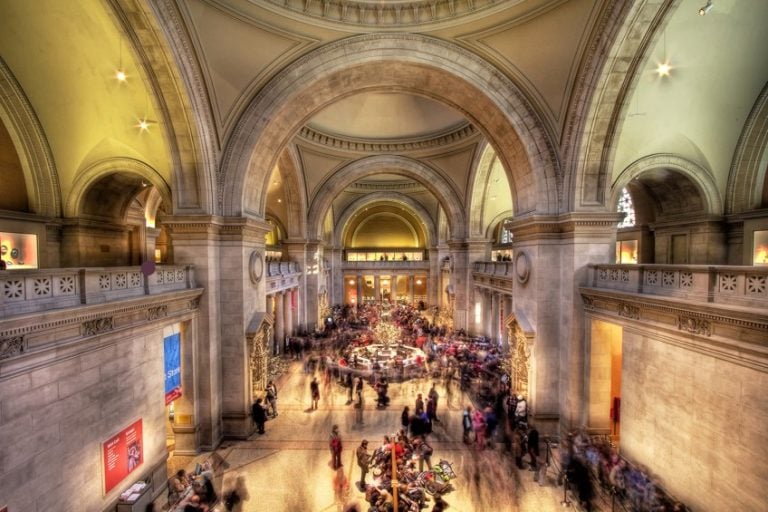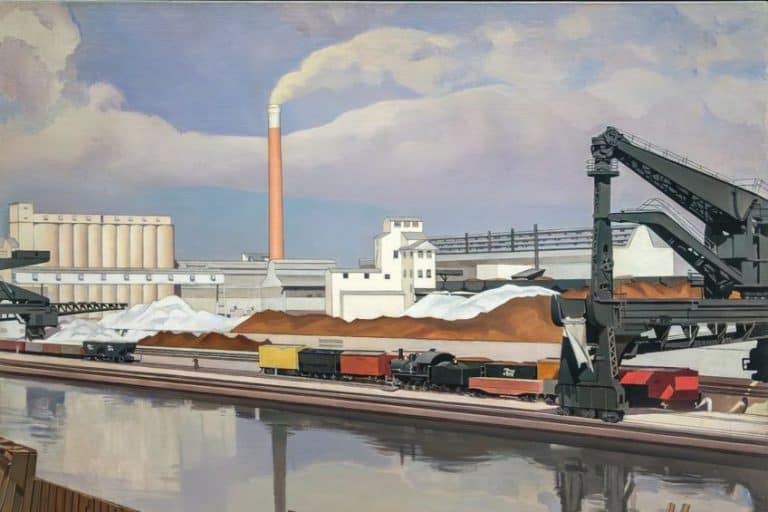The Louvre Museum Facts – Fun Facts About the Louvre Museum
Holding the title of one of the most visited art institutions in the world, the Musée du Louvre is an iconic and fascinating building full of some of the greatest European artworks ever created. This article presents a brief overview of the history of the Louvre in addition to some of its key qualities and answers to a variety of questions. What was the Louvre before it was an art museum? When was the Louvre built? What is the largest museum in France? Where is the Louvre Museum located? Is the Louvre the largest museum in the world? Read on to find the answers to these questions and more!
The Louvre’s History
Aside from being one of the most frequently visited art museums in history, you may ask yourself, “What was the Louvre before it was an art museum?” The answer to that question is a series of events that, over time, established the building as it stands today. Like many historical establishments, political influence and regimes determined the development of a state’s assets.

What Is the Meaning Behind the Museum’s Name?
While the meaning of the Louvre in terms of its origin story is debated, the Grand Larousse encyclopédique claims that the name was taken from a word meaning “wolf hunting den”. Other speculations on the naming of the Louvre Museum are linked to Saint Fara (family of Faronids), the founder of the Abbey of Faremoutiers, who gifted her villa, also called “Luvra” to the monastery.
Although unclear, the only correlation is the name of the villa.
When Was the Louvre Built?
The Louvre was initially built on a fortress erected by Philip II and later developed by King Francis I in 1546 as the Louvre Palace. The Louvre as a museum was established on August 10th of 1793. But when was the Louvre built? Answering this question requires insight into the history of the site and an understanding of its “character development”, as seen below.

What Was the Louvre Before It Was an Art Museum?
Situated in Paris on the bank of the Seine, the Louvre was originally built by Philip II between the 12th and 13th centuries. The building was once a fortress and traces of this can still be found in the basement of the building.
The function of the fortress shifted in 1546 and was eventually assigned as the main area for residence for the French monarchists.
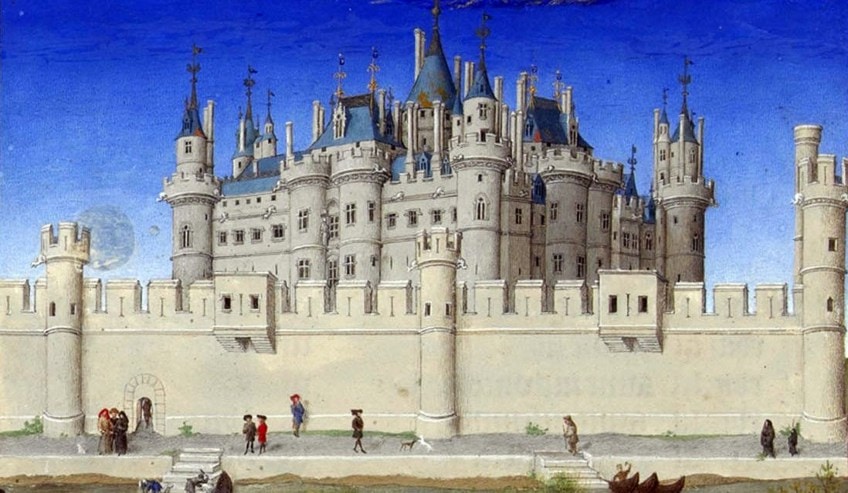
The Louvre Palace: Renovations
Over the years, the building has undergone multiple renovation projects, which continuously redefined the role of the building. After being converted from a military defense space to a residence, the building commenced reconstruction in 1546 under Francis I. This introduced a new French Renaissance style to the architecture and in 1682, the project was paused and the royals relocated away from Paris.
The space was then transformed into an artists’ residency site and many well-known artists were invited under royal patronage.

Making of the Louvre
The Louvre’s history can be considered chaotic, riddled with plans, and perhaps one of its defining characteristics is being slow to act on its plans. The first instance of the palace being used as an exhibition space was in 1682 under Louis XIV. At the time, Louis XIV relocated to a different section of the palace and the Louvre had been reassigned as a site to exhibit the royal collection.
In 1692, the Louvre was also used to store the King’s prized sculpture collection consisting of Roman and Greek artworks.
In 1747, an open call was published for the exhibition of the royal collection and by 1750, a display of 96 artworks was set up by Louis XV in the Galerie Royale de Peinture. Artworks by famous masters such as Titian and Rembrandt were exhibited shortly after at the Luxembourg Gallery.
Thereafter, the gallery was gifted to Louis XVIII in 1778 and was no longer open to the public. The minister of fine arts, Charles-Claude Flahaut de la Billarderie, extended the collection and put forward a proposal to transform the grand gallery of the Louvre into a French museum.
The museum received numerous proposals and plans for redevelopment, however, none of the plans put forward ever took off and the museum renovations were placed on hold.
In the same year, two academic institutions moved into the space. These were the Royal Academy of Painting and Sculpture and the Academy of Inscriptions and Belles-Lettres, after which the site became trademarked for hosting many Salons. Both institutions lasted for around a century until 1789, as marked by the beginning of the French Revolution, the space was redefined for use as a national museum, exhibiting only the best masterpieces.
Soon thereafter, de facto leader Napoleon I rose to power and gained more artworks for inclusion in the growing collection. The Louvre continued to collect more artwork and art objects during the regime of Napoleon III after the Franco-Prussian war in 1940, adding over 20,000 artworks to its collection.

How Big Is the Louvre?
So, how big is the Louvre Museum? What is the largest museum in France? You might as well be answering both these questions. The Louvre Museum spans a massive 72,735 square meters of space and an estimated maximum capacity of 15,000 people.
The Louvre is also considered the largest museum in France.

What Does the Collection at the Louvre Look Like?
The collection at the Louvre is divided into eight departments consisting of archaeological discoveries, art objects, paintings, sculptures, and drawings. The total number of artworks under the eight divisions is an estimated 35,000 pieces with over 380,000 art objects. The collection contains the following, with Roman, Greek, and Etruscan art under one division:
- Near Eastern antiquities
- Egyptian antiquities
- Islamic art
- Greek antiquities
- Sculpture
- Decorative arts
- Prints and drawings
- Roman antiquities
- Etruscan antiquities
- Paintings
The Louvre Museum also houses some of the world’s most famous artworks. Aside from Leonardo da Vinci’s Mona Lisa (1503) are other artworks such as Liberty Leading the People (1830) by Eugène Delacroix, Venus de Milo (150-125 BC) by Alexandros of Antioch, The Wedding at Cana (1563) by Paolo Veronese, and the Egyptian wonder, the Seated Scribe (2450-2500 BCE).

The Louvre Museum: Facts
Now that you have caught a glimpse into the history of the Louvre Museum, you can now appreciate some interesting facts about the Louvre Museum! Below are a few Louvre Museum facts that might take you by surprise.
100 Days and 30 Seconds
Ever wondered how long it would take to see all that the Louvre has to offer on display? It has been tried and tested that it would take approximately 100 days for you to view all the works on display. However, there is a catch! You would have to allocate a maximum of 30 seconds per viewing in order to complete this task within the 100-day time span.
You can only imagine how long the time span would extend if you were a keen observer. The 30-second rule only applies if you do not take a break or sit down for a meal.
Home of the French
The Louvre may have a massive collection but in retrospect, about 66% of the art at the Louvre was made by French artists. It has been estimated that the total number of paintings on display at the Louvre sits at around 7,500, meaning that more than half of these paintings were most likely to be created by French locals.
Architecture: I.M. Pei
In all of Louvre history, French origin was always the preference. It is of no surprise to find out that the architect of the great 21-meter-high glass pyramid was in fact designed by I.M. Pei, a Chinese architect. This is one of the most iconic and most photographed architectural sites of the building and it may surprise you that a French architect was not selected.
Considering skill over tradition, the Chinese architect designed the structure and it was built as an addition to the building in the 1980s.

Night at the Haunted Louvre?
Out of all the Louvre Museum facts, this is the creepiest! If you visit the Tuileries Gardens at the Louvre, you may spot a red ghost. This may scare you away, but do not fear! Many who have reportedly seen the ghost have stated that the ghost was “unthreatening”.
The alleged ghost is believed by some to be an ancient mummy named Belphégor. Spooky or intriguing?
The Louvre 2.0: Abu Dhabi
If you cannot make it to Paris, try Abu Dhabi. In 2016, Abu Dhabi built another museum inspired by the Louvre, which also happens to be the biggest art museum on the Arabian Peninsula. The construction of the building alone amounted to a whopping €600 million and the museum currently receives visitors by the millions.
Napoleon Rule
The Louvre Museum was even renamed Musée Napoléon, but this soon fell away after 11 years when the political leader faced his abdication in 1815, accompanied by the subsequent return of artwork seized under his regime. During his reign, the political leader collected around 5,000 paintings, all of which were eventually returned.
It has also been reported that Napoleon was the first person to hang Leonardo da Vinci’s “The Mona Lisa” (1503). This supposedly happened in his personal quarters.

How Many Acres?
The Louvre has a total of 480,000 artworks stored across 15 acres of gallery space. Due to the tremendous number of artworks housed in the collection, the Louvre added extensions multiple times to accommodate the expansion as it occurred.
The Mona Lisa as Correspondence
During the chaotic events of World War II, the collections at the Louvre rotated locations approximately seven times. It has been documented that a coded message was aired when the Allied Forces made their entry into France. The message was recorded as “The Mona Lisa is smiling” and served as crucial correspondence and a warning of their location to avoid bombing.
Many of the artworks disseminated prior to this were eventually returned in 1947.
One of the events directed at the Louvre following this historical moment was an inscription made at the Louvre School. The inscription was of the French National Museum’s assistant director, Jacques Jaujard, which is very much prominent upon entry into the Tuileries Garden.
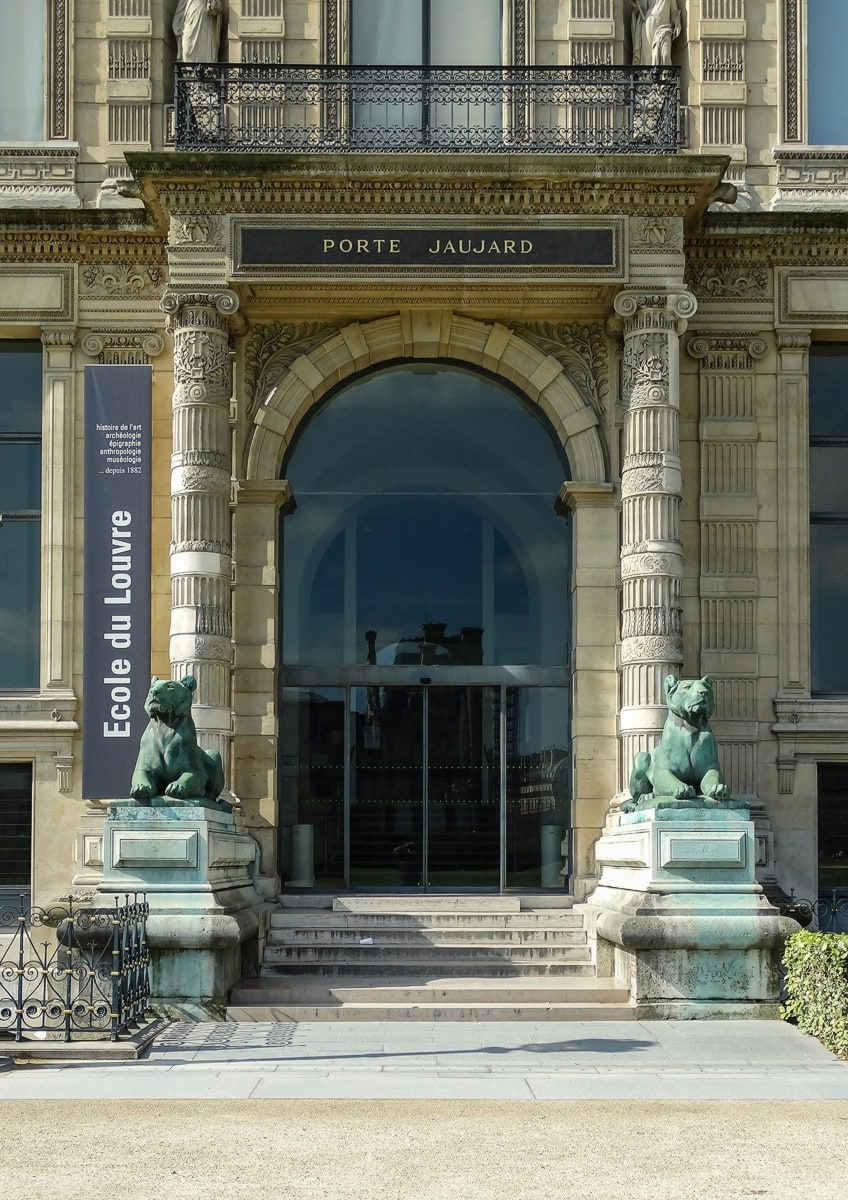
The Nazi Attacks
Due to the nature of Nazi attacks involving Hitler’s target on art museums, Jacques Jaujard took the initiative to seek out methods of preserving and protecting the collection. Approximately 3,690 artworks were sent out for refuge in various safe zones only 10 days before the war broke out.
All the artworks were wrapped and packaged appropriately to avoid as much damage as possible and around 200 trucks were used to transport over 1,900 boxes of precious art.
The procedure was of high priority and precaution was taken by having a curator present in each truck. Out of the many interesting facts about the Louvre Museum, this is sure to be the cleverest. The collection can be considered “saved” by the assistant director as 40 other museums faced serious destruction to property during the German invasion.
The Mona Lisa: Subject to Theft
This is definitely one of the most canonical events on the Louvre Museum facts list. Potentially the first man to recognize the Mona Lisa as one of the most valuable paintings was Vincenzo Peruggia. Peruggia was an Italian repairman who succeeded in stealing the masterpiece in 1911. His success eventually ran out after two years and the treasured masterpiece was returned.
Perhaps one can even say that the handyman’s theft of “The Mona Lisa” is what contributed to the artwork’s global fame.
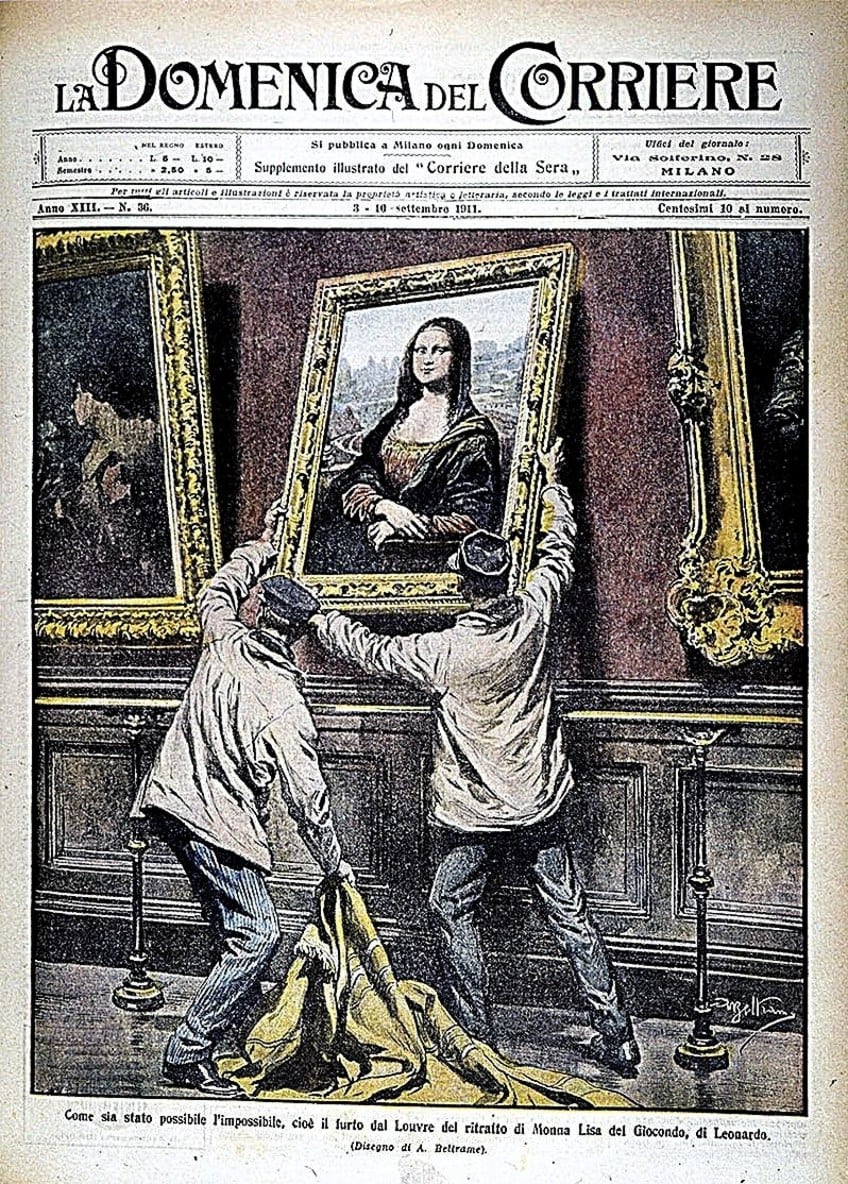
During the two years of the disappearance of the Mona Lisa, the painting was featured in many newspapers and circulated to the extent that it became a common name known to all. The famous Pablo Picasso was also considered a key suspect for a certain period of time until Peruggia was caught in an attempt to sell off the painting to an art dealer. Luckily, the art dealer was The Mona Lisa’s savior and immediately contacted the police.
By then, the masterpiece was regarded as the most famous painting known to all.
The Ministry of Finance Headquarters
Once the site of operation for the ministry of finance, the first floor on the Denon Wing of the Louvre hosted the ministry as late as 1989 until the ministry relocated to Bercy on the Seine, which was a more modern establishment.
Ownership
The Louvre is currently owned by the French government with over 60% of funding for the museum being sent out by the government alone.
Other areas of financing for the museum stem from museum ticket sales, loan programs, loan agreements, and donations.
Networks
Located underneath the museum is a connection leading to the metro, which also features a small array of shops and boutiques. This pathway can be found at the Carrousel du Louvre and leads you directly to the metro.

Marie Antoinette’s Makeup Table
Make your way to level one and into the Sully wing to discover some of Marie Antoinette’s old furniture, seized from the Palace of Versailles. Most of the furniture is still in pristine condition and you can even see some of her personal pieces such as her makeup table. Only a select few pieces are now owned by the French government, with the rest of the furniture sent back to Versailles.
Picasso: Exhibition at the Louvre
A rare event: Picasso celebrated his 90th birthday through an iconic exhibition held at the Louvre. This was a rare occasion since not many artists (who were still alive) were able to exhibit at the Louvre while the institution served as a museum. Picasso’s works were exhibited at the Louvre’s Grande Galerie.
At present, many of his works are now stored at neighboring institutions such as the Musée Picasso and the Musée de l’Orangerie.
The Last King: Sun King Louis XIV
The young King was sent to the throne at the age of four and years later, at the age of 12, the young King and his mother were sent to prison at the Palace situated right next to the Louvre Museum. Once the King was old enough, he had already developed a level of distrust for Paris and later went on to implement his own renovations at the Louvre. He did not stay for very long and ended up relocating to Versailles and making a new home at one of his family’s hunting lodges.
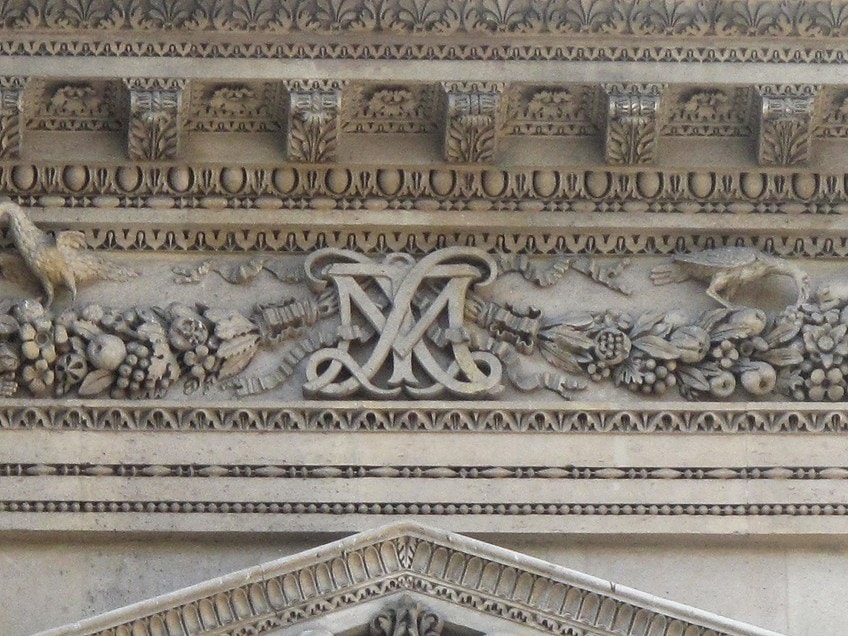
After reviewing the Louvre’s history and interesting facts, it should definitely be one of the destinations to include on the top of your bucket list. Equipped with all the interesting facts, all that is left is for you to plan your trip to Paris and witness the majestic Louvre and all it has to offer as the largest museum in the world. From all the facts about the Louvre Museum, which one is your favorite?
Take a look at our Louvre Museum webstory here!
Frequently Asked Questions
Where Is the Louvre Museum Located?
The Louvre Museum is located in the middle of Paris, in the Louvre Palace in France.
What Is the Largest Museum in France?
The largest museum in France is the Louvre Museum in Paris, also known as the Musée du Louvre in French. This is also considered a historical national landmark.
How Big Is the Louvre?
The Louvre is a massive building consisting of 72,735 square meters.
Is the Louvre the Largest Museum in the World?
Yes, the Louvre is not only the largest art institution in France but it is also the largest art museum in the world.
What Makes the Louvre Museum So Important?
The Louvre Museum is important not only as a historical landmark to France but also as a major landmark to the world. The Louvre is known to be the largest art museum in the world and is looked up to for its incredible collection of artworks by great artists. The museum is also the home of Leonardo da Vinci’s Mona Lisa (1503), also a prominent painting for being the world’s most expensive artwork.
How Many Visitors Does the Louvre Museum Receive?
According to recent statistics, the Louvre Museum receives more than eight million visitors each year and around 15,000 visitors per day.
Was the Mona Lisa Always at the Louvre?
Prior to the Louvre, Leonardo da Vinci’s The Mona Lisa (1503) was stored in other royal locations by Francis I. The painting had only received the Louvre as its permanent home after the fall of the French Monarchy.
Justin van Huyssteen is a freelance writer, novelist, and academic originally from Cape Town, South Africa. At present, he has a bachelor’s degree in English and literary theory and an honor’s degree in literary theory. He is currently working towards his master’s degree in literary theory with a focus on animal studies, critical theory, and semiotics within literature. As a novelist and freelancer, he often writes under the pen name L.C. Lupus.
Justin’s preferred literary movements include modern and postmodern literature with literary fiction and genre fiction like sci-fi, post-apocalyptic, and horror being of particular interest. His academia extends to his interest in prose and narratology. He enjoys analyzing a variety of mediums through a literary lens, such as graphic novels, film, and video games.
Justin is working for artincontext.org as an author and content writer since 2022. He is responsible for all blog posts about architecture, literature and poetry.
Learn more about Justin van Huyssteen and the Art in Context Team.
Cite this Article
Justin, van Huyssteen, “The Louvre Museum Facts – Fun Facts About the Louvre Museum.” Art in Context. August 5, 2022. URL: https://artincontext.org/the-louvre-museum-facts/
van Huyssteen, J. (2022, 5 August). The Louvre Museum Facts – Fun Facts About the Louvre Museum. Art in Context. https://artincontext.org/the-louvre-museum-facts/
van Huyssteen, Justin. “The Louvre Museum Facts – Fun Facts About the Louvre Museum.” Art in Context, August 5, 2022. https://artincontext.org/the-louvre-museum-facts/.






